Supporting and enabling sustainable communities: action plan to address depopulation
This Action Plan newly establishes a strategic policy position for Scottish Government around addressing depopulation and maps a range of new and existing supportive activity being undertaken across Scottish Government and by local and regional delivery partners.
05 Regional and Local Delivery
The Scottish Government welcomes local leadership to tackling population sustainability challenges by trialling new approaches, sharing learning, and identifying gaps across key issues. Indeed, it is essential that tackling depopulation has this strong local leadership to ensure the nuances of local challenges and opportunities are understood and embraced. This local level of accountability and intervention can be enabled by Scottish Government, but should not be imposed by Scottish Government.
This enabling role extends to working within existing structures to fully utilise the powers available. In doing so, when insurmountable barriers present themselves, the evidence base is also created to advocate for changing policy or legislation.
Those organisations that form these structures also have their own roles and powers for tackling depopulation, and can play an integral role through taking on local coordination and leadership in putting their “place” under the magnifying glass, working out what is required, and collaborating with partners to develop and deliver the tailored solutions required. In many cases, it can be expected that these tailored solutions will present themselves as a place-specific blend of the range of enabling policies highlighted in Section 6 Addressing depopulation: a national response, locally delivered.
We will continue to support locally-led repopulation initiatives in areas like Argyll and Bute, Na h-Eileanan Siar, the Highlands, and North Ayrshire, and work with local and regional partners through the Convention of the Highlands and Islands. Furthermore, we will look to support local initiatives in the South of Scotland and work with the Convention of the South of Scotland to ensure success for this area.
The independent Expert Advisory Group’s recent report is, however, clear that ideas for targeted population policy interventions, such as ‘Repopulation Zones’, need to be carefully calibrated in order to have positive impact. Unintended consequences on neighbouring areas and lack of community buy-in are risks that have damaged targeted population interventions elsewhere in the past. The report highlights that local community involvement in policy design is crucial in order to ensure tailored interventions that will work for the community.
One way of ensuring the involvement of local communities is applying a place-based methodology, such as the Place Standard Tool, to facilitate and structure the assessment of a particular place. These methodologies are important as they provide a framework of shared understanding and a space in which people can identify the most urgent needs of the community as well as informing future action. This is a key component of our approach as we are keen to listen and engage with places’ assessments of their own areas in order to mitigate or adapt to the depopulation challenges by enabling positive changes led by local communities.
As part of our approach, we are clear that national and regional delivery structures, should, where possible enable and support locally-delivered action to address population challenges. This chapter therefore sets out:
- A range of collaborative work being delivered through existing regional and local structures, where a depopulation lens can be, or is being, applied to decision making;
- New initiatives to be delivered locally, and where appropriate supported by the Scottish Government, to enable local areas to better understand drivers of depopulation in their communities, and design and deliver tailored responses.
We are also keen to work with representatives of the community and where there is scope to work with cohorts of young people across Scotland who are affected by challenges relating to population decline, we will look to better understand their experiences in the context of population decline. As one component of this, we will work with Youth Scotland and the Young Islanders Network to meet the Network’s commitment to consider “how to best address population decline through co-developing ideas and actions to support and encourage young people to remain on, move to or return to the islands”. We will also explore opportunities to engage with young people in other areas affected by population decline, to better understand why young people are leaving certain communities for elsewhere.
Actions
- We will continue to support locally-led repopulation initiatives in areas like Argyll and Bute, Na h-Eileanan Siar, the Highlands, and North Ayrshire, and work with local and regional partners through the Convention of the Highlands and Islands. Furthermore, we will look to support local initiatives in the South of Scotland and work with the Convention of the South of Scotland to ensure success for this area.
- We will work with Youth Scotland and the Young Islanders Network to meet the Network’s commitment to consider “how to best address population decline through co-developing ideas and actions to support and encourage young people to remain on, move to or return to the islands”. We will also explore opportunities to engage with young people in other areas affected by population decline, to better understand why young people are leaving certain communities for elsewhere.

5.1 Local Authorities
Throughout the development of this Action Plan, the Scottish Government has engaged deeply with a range of local authorities and through COSLA. This includes regular, ongoing engagement with key delivery partners within rural and island local authorities, and harnessing feedback from all local authorities at a jointly-chaired policy roundtable, run by the Scottish Government and COSLA. In addition to this, COSLA is represented on the Scottish Government’s Population Programme Board, ensuring that the local authority voice is strongly represented in the work of the Programme.
As part of delivering on the commitments set out within this Action Plan, and as informed by stakeholders and key groups such as the Convention of the Highlands and Islands and the Convention of the South of Scotland, the Scottish Government and COSLA will work together to design and deliver solutions, ensuring the strengths of both local and national government are used to best effect to make the biggest possible positive difference to areas facing challenges around population.
Local Authorities will be an essential partner in addressing depopulation in agreeing priorities for development in their locality. For example, stakeholders have been unequivocal that the delivery and availability of affordable housing is absolutely essential to addressing our population challenges – across rural, island and urban areas.
Every local authority in Scotland is required by law to prepare a Local Housing Strategy, supported by a Housing Need and Demand Assessment (HNDA), which sets out its strategy, priorities and plans for the delivery of housing and related services. Housing and planning authorities can augment their Housing Need and Demand Assessments with robust additional data and research where this exists. The Housing Need and Demand Assessment sets out long-term housing requirements, including the likely requirement for new homes as well as trends in affordability and tenure. A positive example of further building an evidence base to inform housing strategies is the work being undertaken by the Arran Housing Taskforce.
Case study
North Ayrshire Council has established an “Arran Housing Taskforce” which will involve a wide range of partners to address the issues which face island residents and businesses.
The Taskforce aims to assess the demand for affordable housing on Arran and identify issues that may be limiting economic sustainability and growth.
Working in partnership with the Scottish Government, local community groups and Registered Social Landlords who operate on the island, the Taskforce will be the recognised body that will work collaboratively on issues relating to housing on Arran.
Two current pieces of work the group are focusing on are:
- A localised island housing analysis identifying the level of housing need on the island. This will focus on affordable and rented accommodation but will not be restricted to that and aims to produce a holistic solution which also looks at the release of land for new build and private housing as well.
- Investigation into additional and novel models of financing projects to reduce reliance on public sector grants which may also enable a wider distribution of grant funding, therefore supporting more projects to be delivered.
Furthermore, planning authorities are required to prepare a Local Development Plan, for their area, reviewed every ten years, setting out how places will change in the future, including where development should and should not happen. Local Development Plans should set out tailored approaches to rural housing, and where relevant include proposals for future population growth – including provision for small scale housing such as that on crofts, including woodland crofts, and the appropriate resettlement of previously inhabited areas.
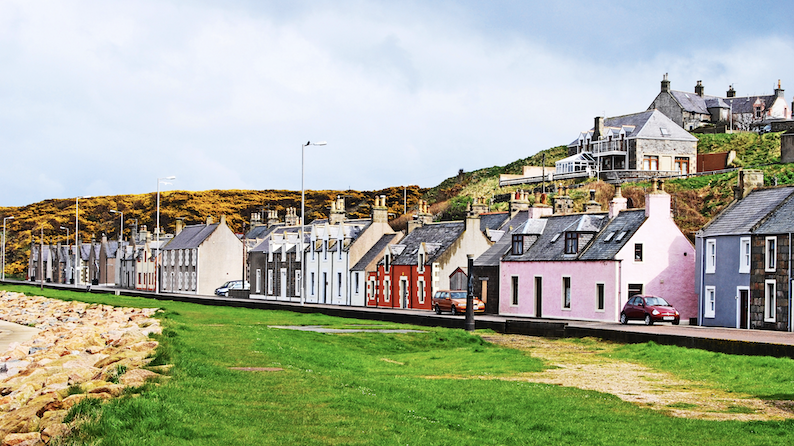
Local authority coordinated responses to depopulation
Taking a place-based approach to how depopulation is addressed in Scotland is a public commitment made by Scottish Ministers through the Convention of the Highlands and Islands, and through the Ministerial Population Taskforce. We know that that partners see it as a vital component to supporting the sustainability of communities facing population decline.
Three Community Settlement Officer posts exist, with each of the posts having been created in financial year 2022/23, in Argyll and Bute Council, the Highland Council, and Comhairle nan Eilean Siar. These had previously been jointly funded by Highlands and Islands Enterprise and each local authority, and we know that these roles have been effective because they have taken a place-based approach. These roles have developed in response to place-based needs within the three areas, and have included work to:
- Provide guidance to people wanting to stay in or move to the community;
- Work with partner agencies across their respective areas to gather data and information on the issues impacting on people’s decisions to remain in/move to the community;
- Support the development of further projects and initiatives to help address population decline.
The Scottish Government agreed with host local authorities to jointly fund the continuation of these roles for the 2023/24 financial year. The Scottish Government has made this commitment in response to local authorities expressing the importance of continuing these posts, which they see as critical to supporting their communities. Highlands and Islands Enterprise will continue to support delivery through existing programmes in operation within Community Settlement Officer geographies.
In supporting the continuation of these roles alongside local authorities, Community Settlement Officers will enable:
- Further building the evidence base around the impact of having place-based co-ordinating/facilitating roles with a focus on addressing depopulation;
- Working with partner agencies across their respective areas to gather more data and information on the issues impacting on people’s decisions to remain in/move to communities;
- Sharing learning from developing projects, initiatives, and partnerships to better inform the nationwide delivery of an addressing depopulation policy.
In meeting a wide range of locally-identified priorities tailored to the needs of communities, Community Settlement Officers will focus on:
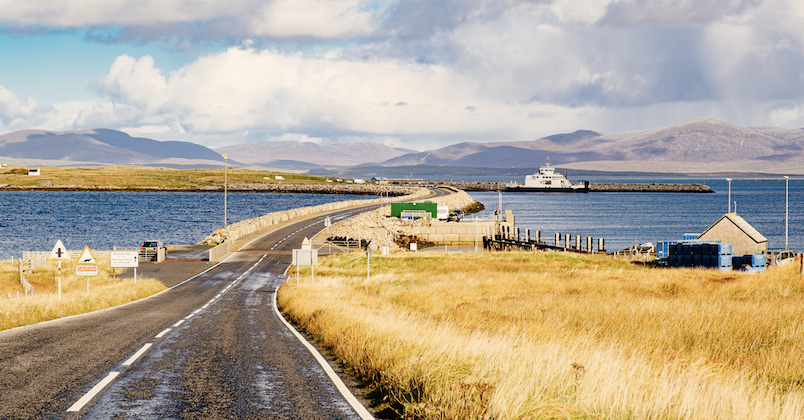
Uist
- Continuing to support the ‘Uist Repopulation Zone Action Plan’. The interventions proposed in this plan are based around five critical areas, housing, jobs, infrastructure, Gaelic, and skills. With support, there is a conscious effort to deliver and monitor this plan going forward with an inter-agency response to all actions.
- Continuing to actively promote the role of the Settlement Officer across several marketing channels, whilst continuing to provide a high-quality service to current and new residents in the community.
- Continuing to support the Uist dedicated online platform – Uist Beò. This platform has been designed to show the vibrant, authentic tales of Uist, encouraging relocation and settlement as well as connecting residents to resources and showcasing what opportunities there are available.
- Investigating childcare solutions on the ground with early years officers, SCMA, and Regional Economic Partnership childcare group.
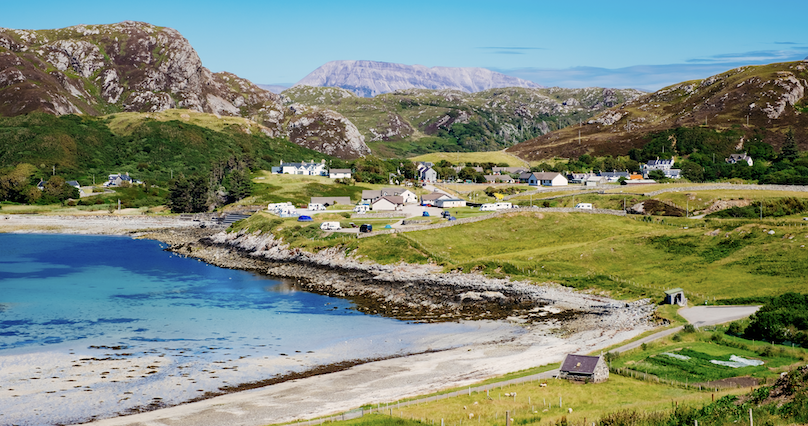
North-west Sutherland
- Developing the already identified 5 housing sites with a cumulative area of over 6ha.
- Progressing housing development options for Tongue area to accommodate the expected 50 new jobs created over the next two years.
- As requested by communities, providing support for undertaking Local Place Plans to coordinate community development aspirations within the Highland Wide Local Development Plan.
- Supporting Highland Council Housing Development renovation and conversion of buildings for new accommodation.

Argyll and Bute
- Continuing to provide support to those wishing to relocate to Argyll and Bute.
- Continuing to gather evidence and provide partners with feedback on the challenges individuals experience remaining in and relocating to communities across Argyll and Bute.
- Continuing to work with local authority colleagues to review and update settlement strategic communications across several marketing channels, supporting those wishing to relocate to Argyll and Bute.
- Progressing with the implementation of the Settlement Project Support Officer Actions that were approved by the local authority’s Economic Development and Infrastructure Committee on 31 August 2023.
Inverclyde
Depopulation within urban communities in Scotland is most apparent in Inverclyde, where a 5.6% population decline has been observed between 2011 and 2021. As set out in the opening chapter of this Action Plan, it is generally considered that the drivers of depopulation are different in urban settings compared to rural areas. The effects of post-industrialisation and deprivation are understood to have played a pivotal role in driving demographic and population change in the area, but the Scottish Government recognises the opportunity, through this Action Plan, to set out initial action which will be delivered in partnership with Inverclyde Council, focusing on locally identified priorities to enable future population attraction and retention measures to be successful.
The work of the Inverclyde Socio-Economic Taskforce has identified a number of investment proposals to generate growth in the local economy, with the aim of stabilising the population. The Scottish Government participates in the Taskforce and will consider all proposals for action in detail. That work complements the wide range of other work being delivered by the Scottish Government and partners which will support wider strategic objectives for the area, such as the Glasgow City Region City Deal.
Through a funding model similar to that being used to retain the Community Settlement Officers in Argyll and Bute, the Highlands, and Na h-Eileanan Siar, the Scottish Government will partner with Inverclyde Council to deliver a Community Settlement Officer focused on addressing depopulation in Inverclyde. The role will acknowledge opportunities identified locally to support the retention of new cohorts of people in the area, such as those granted asylum.
Dumfries and Galloway
Population decline in Dumfries and Galloway between 2011 and 2021 has seen an overall drop of 1.7%, with a range of potential drivers identified to be driving this trend. Additionally, more localised population outcomes in parts of the local authority area see an even greater trend of depopulation occurring.
Dumfries and Galloway Council has identified a need for greater understanding about the effect of current issues affecting the area’s population outcomes, to enable them to design and deliver the best possible interventions to reverse population decline. For example, work delivered locally around provision of further and higher education courses has enabled local workforce demands to be met, and driven population retention of younger people as a result. However, there are opportunities around enabling the area to be somewhere where people are attracted in order to newly study at key phases in life. The Scottish Government will therefore provide funding for Dumfries and Galloway Council to undertake research, to improve the evidence base around this and ensure the greatest possible impact of future interventions. It is envisaged that this work would simultaneously support future delivery of addressing depopulation policy beyond Dumfries and Galloway, if interventions are identified which are applicable to other areas, and will complement existing support being delivered in the area through, for example, the Borderlands Growth Deal and other commitments.
Addressing Depopulation Fund
As part of this Action Plan, the Scottish Government is also announcing the establishment of an Addressing Depopulation Fund, which will support local authorities to implement varied pathfinder measures to address depopulation challenges within their localities. In keeping with the ambitions set out within this Action Plan and the Verity House Agreement, the Scottish Government will be flexible in enabling local government to use the funding in order to address local need. The Fund – which will initially make available £180,000 to be split between a prospective three local authorities – will be operational across financial years 2024/25 and 2025/26. By enabling local authorities to propose their own specific measures based on local need, this will generate learning in terms of successful approaches which may be more broadly applicable to communities across Scotland.
Actions
- We will work with COSLA to design and deliver solutions, ensuring the strengths of both local and national government are used to best effect to make the biggest possible positive difference to areas facing challenges around population.
- We will jointly fund the continuation of existing Community Settlement Officer roles for the current financial year, in partnership with local authorities. Highlands and Islands Enterprise will continue to support delivery through existing programmes in operation within Community Settlement Officer geographies.
- We will partner with Inverclyde Council to deliver a Community Settlement Officer focused on addressing depopulation in Inverclyde.
- We will provide funding for Dumfries and Galloway Council to undertake research with regards to local population outcomes.
- We will also establish an Addressing Depopulation Fund, to support local authorities to implement varied pathfinder measures to address depopulation challenges. In keeping with the ambitions within this Action Plan and the Verity House Agreement, we will be flexible in enabling local government to use the funding to address local need.
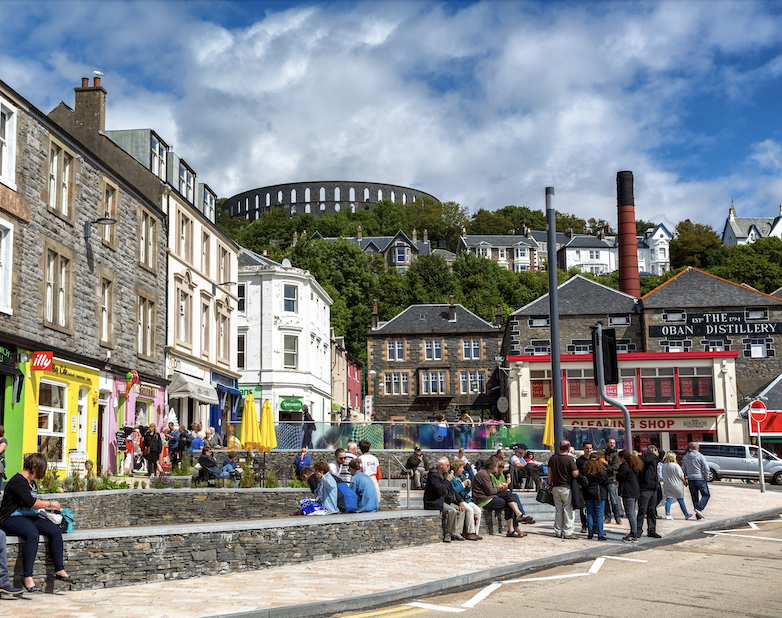
5.2 Enterprise delivery
Our enterprise agencies – in particular Highlands and Islands Enterprise (HIE) and South of Scotland Enterprise (SOSE) – have a key role to play in addressing the challenges faced by our rural businesses and communities. They provide specialist expertise, training and funding for businesses and support the development of infrastructure to help businesses remain in their local area and employ more people. They support communities to build their capabilities and help them to develop community assets. Our agencies are actively involved in their Regional Economic Partnerships, developing and delivering regional economic strategies which identify where collaborative action can maximise outcomes and impact. SOSE and HIE have recently published new strategies , aligned with the aims and priorities of the Scottish Government, which will take forward their work over the next five years.
Highlands and Islands Enterprise
HIE recognises the need to support people, communities, and businesses and it does so through funding the development of businesses and community enterprises and enhancing the skills of people leading and working in organisations across the region. HIE’s aim is to support sustainable jobs and the retentionof a skilled workforce through a range of interventions.
This includes:
- A locally based focus from locally based development staff who have a relationship with businesses and community organisations, supporting them to enhance their sustainability and development. This can mean grant funding, advice, or support to locate suitable finance for projects.
- Skills development for business leaders, entrepreneurs and those working in community organisations. This often includes training for board members and good governance.
- Supporting communities to acquire assets through the HIE-run Scottish Land Fund.
- The operation of the Scottish Land Fund and funding for circa 50 community development officers who focus directly on population challenges.
- Place-based planning support.
- A strategic infrastructure programme including a property portfolio, the Science Skills Academy, and major investment in ports and harbours to optimise our renewable energy production across our regional coastline.
- Broadband development and feasibility studies to support projects.
HIE has recognised the need to have a sustainable population and to address the needs of sparsely populated areas. In providing a specific officer to work on these issues, HIE is providing leadership and facilitation for the work of the COHI (Convention of the Highlands and Islands) Working Group on Population, as well as leading the development and delivery of the settlement officers project in three areas of the region during the 22/23 financial year.
HIE’s work with businesses and communities is a long-term commitment. The dynamics of an economy can change over time and HIE is well placed to respond to this and support organisations. Change can take time in communities, so HIE’s interventions can take time to deliver the desired outcomes. HIE is a willing partner in tackling key issues like housing and, whilst it does not have a primary responsibility for delivering housing projects, it works with communities and policy makers to support the conditions which makes these projects possible. Over the past decade, housing pressures have become an economic inhibitor for rural and island communities and, therefore, partnership working in this space is crucial for ensuring the economic success of the region.
HIE has a strong track record in transformational regional projects which it views as having been vital to the sustainability of the region. These have included hydro schemes, the development at Dounreay, supporting the development of the aquaculture sector, the world’s first connected wave and tidal centre at E.M.E.C in Orkney, and the establishment of Wave Energy Scotland. In addition, HIE’s investment in its regional University, the University of the Highlands and Islands, recognises the vital role of availability of higher education in the retention and attraction of young people. HIE aims to empower people and their communities and offers assistance through a network of business and community-focussed development managers. It supports one-off interventions based on need and the impact of the project. It has access to specialist knowledge and networking opportunities and, by investing in community assets, can support cultural and heritage developments which often form the centre of many communities. The HIE teams are based in the heart of Highland and Island communities, all connected into core teams which look at wider sectoral issues. HIE has decades of experience to draw upon, with long standing relationships across the Highlands and Islands to deliver results.
South of Scotland Enterprise
South of Scotland Enterprise is Scotland’s newest enterprise agency and was established on 1 April 2020. It brings a fresh and regionally focussed approach to economic and community development in the South of Scotland (covering Dumfries and Galloway and the Scottish Borders). Its focus as a public body is to help people, communities and enterprise in its region thrive, grow and fulfil their potential. In April 2023, SOSE published its first five year plan which captures its ambitions for the region.
Shaped by engagement with the South’s businesses, social enterprises, community groups and members of the public, the key priorities of the plan have been entitled the Six A’s:
1. Advancing innovation and improving productivity
2. Accelerating Net Zero and nature-positive solutions
3. Advocating for Fair Work and equality
4. Attracting ambitious investment
5. Awakening entrepreneurial talent
6. Activating and empowering enterprising communities
It supports people, communities and businesses across the region with support, that includes advice and potentially funding. Its staff work across the region. SOSE recognises that the success of the region requires people and population challenges have significant implications for businesses and communities in the region.
SOSE works with existing businesses to help create more opportunities for people in the region, encouraging them in their growth ambitions and supporting entrepreneurs wanting to start their business, including those from under-represented groups. SOSE work inward investors to attract them to the region. Working with partners it is committed to creating a region where people want to live – from improvements in our digital and physical infrastructure, to strengthening the region’s further and higher education offer to create choices for people in the region to celebrating the region’s great quality of life.
SOSE is a key partner in the region’s Regional Economic Partnership that brings together public, private and third sectors together with education, health, housing and community interests. The REP has a clear strategy for the region’s success, to create a green, fair and flourishing region, which recognises the need to retain and attract people to the region through a variety of specific activities.
5.3 Regional Delivery
Convention of the Highlands and Islands
The CoHI Working Group on Population has been meeting regularly for over two years. The aim of the group is to provide a forum for the discussion of population issues and pilot approaches which seek to address the challenges of the declining population in the Highlands and Islands. The group seeks to find solutions for the challenges across sparsely populated areas critical to overall sustainability of communities in the region.
Five areas of focus were defined by the working group, namely housing, jobs, critical infrastructure (including transport and broadband), the provision of and accessibility to public services and retaining and attracting young people to the region. The group subsequently began working with colleagues and other partners to consider these issues through the lens of population, on which economic and community development is dependent.
The membership of the group consists of:
CoHI Working Group on Population - Scottish Government Population and Islands teams join as required
- Highlands and Islands Enterprise (chair)
- North Ayrshire Council
- The Highland Council
- Skills Development Scotland
- Comhairle nan Eilean Siar
- Argyll and Bute Council
The group settled on geographical focus for the discussions and any project work. The working group is very aware of population issues elsewhere in the Highlands and Islands, but these areas were decided on based on what was known about them, and also as pilot zones:
- Uist
- North-West Sutherland
- Coll
- Tiree
- Kintyre
- Bute
- Roseneath Peninsula
- Arran
- Cumbrae
The existence of the population zones has provided a focus for local authority partners to align their services with the needs in the zones. It has delivered a refocusing of resources, in some cases to a specific action plan (in Uist for example), or it has provided a reason to tackle particular issues in one area (access to land for housing in North-west Sutherland). It has allowed knowledge to be shared from the already established local island plans for Cumbrae and Arran. Whilst in Argyll and Bute, it has enabled specific evidence bases to be developed to support projects across the region where local priorities differ in communities.
The partners involved in the CoHI Working Group on Population have individually and collectively reviewed resource allocation to support progress and projects in relation to population challenges. HIE has funded a specific post to drive the programme of the working group and provide leadership on the Settlement Officers project. SDS has deployed significant officer time to be part of the discussions and support key projects like the Island Skills Fund (below). The Group feels that addressing the critical issues will make it easier to retain and attract young people to the region. By looking at these issues through the lens of population, the clear links between the issues becomes clear. Providing a range of housing is positive but it will only make an impact in a community if people can access services like childcare and high-speed broadband. A connected community is one which views itself through a wide lens to become a sustainable community.
Projects and Outcomes to date
The first initiative to develop from the working group is the Settlement Officer project, which has driven action set out elsewhere in this Action Plan. As mentioned above, three officers were recruited in three local authority areas (Argyll and Bute Council, The Highland Council, and Comhairle nan Eilean Siar).
In its first year, the project delivered distinct outcomes in each region, reflecting the true nature of place- based development. The different work streams carried out by the settlement officers in each region have demonstrated true place-based development, where a locally-based officer is able to respond to the needs of the community. For example:
- In Uist, the focus has been on fielding relocation queries, learning about specific challenges to retaining and attracting people to the region, which has helped inform and support the Uist Repopulation Plan.
- In North-west Sutherland, work has been prioritised on developing a pipeline of land for housing, working with partners to build relationships to allow this to happen. Some partners are working together for the first time.
- In Argyll and Bute, the officer has carried out extensive survey work providing detailed data for the first time about priorities in communities across the region.
Broadband and connectivity is deemed a key service in the region, akin to the installation of electricity. The focus on population zones has also provided a focus for potential broadband projects in parts of the region not yet reached by the R100 contracts. A connectivity survey has been completed in one of the zones – Uist – with plans now underway to run projects which address the various broadband issues in the islands. The focus given to this issue by the working group has provided an established network for colleagues to tap into for project work. The working group has also provided views on the potential and viability for digital hubs in the region, a project being considered by HIE and supported by HIE’s population manager.
Childcare has become a critical issue across the region. The Scottish Childminding Association, SDS, HIE, and local authority partners have worked together on projects to train childminders across Scotland, particularly in the Highlands and Islands. There is the potential for a pilot on a single care model where people are trained to work with children and the elderly in a community where it is difficult to find enough staff for both types of roles.
Convention of the South of Scotland
The Convention of the South of Scotland provides a structure for the public sector in the South of Scotland to engage directly with Scottish Government. It brings together public bodies with responsibility for growth and provides a forum for the exchange of ideas on priorities and how to tackle key regional issues.
Since its establishment it has focused on a range of topics of key regional interest. It has had a focus on housing, recognising the key need for housing in the region. It has explored the potential of key assets in the region from its cycling offer to its natural capital offer and how they contribute to the region’s success.
The Regional Economic Partnership helps shape COSS’ agenda ensuring that regional partners are engaging effectively with government, helping to shape policy that recognises the region’s needs and opportunities.
Regional Economic Partnerships
The Scottish Government supports Regional Economic Partnerships (REPs) to develop and deliver their regional economic strategies. For some of these, addressing population challenges and securing a strong labour market within the region is essential (particularly in places like the South of Scotland, Ayrshire, Highlands & Islands, and Forth Valley). We acknowledge our role in working with the REPs to use economic opportunities to mitigate or lessen the challenge.
The known “drift” of working age and healthy population within these regions is captured in population data which is often used by both SG and UKG to select regions for economic interventions and determine funding allocations. Regions with low population were discounted from consideration from recent Investment Zones which, if replicated, would mean those regions will always suffer disadvantage for strategic, large scale and future-looking economic opportunities, potentially exacerbating the depopulation challenge within the region.
To help address this potential conflict in policy aims and ambitions, the Scottish Government’s Regional Economic Policy Review contains a recommendation around developing a more nuanced allocation methodology for funding (which could potentially be adjusted and used for future policy making), which would take greater account of needs such as addressing depopulation in a far more sensitive manner more in keeping with the aims of a Wellbeing Economy.
Work around developing more nuanced allocation methodology is connected to work being undertaken to look at aggregating some budgets to a regional level to support the delivery of their regional economic strategies, which (as noted above) could include interventions intended to address some depopulation challenges.
Actions
- We will take forward the Regional Economic Policy review recommendation to develop a more nuanced allocation methodology for regional funding.
- We will, when developing new regional economic strategies, engage with and support Regional Economic Partnerships which are facing challenges around population decline, to note relevant work ongoing across the regions that would contribute to national outcomes and support population attraction and retention.
- We will support regional empowerment and growth by acting on the recommendations of the Regional Economic Policy Review, and working with Local Government and other partners to develop Scotland’s network of Regional Economic Partnerships, supporting our rural and island businesses, including tourism.
Scottish Rural and Islands Parliament
The Scottish Government is committed to ensuring that the voice of rural communities and businesses is heard and included in the development of Scottish Government policy. We recognise the need for fresh approaches on long-standing issues impacting on rural and island development, as well as emerging opportunities to strengthen rural and island Scotland’s contribution to building a more just, resilient, and sustainable nation.
Scotland is the only part of the UK that has a Rural Parliament. The Scottish Rural & Islands Parliament is a grassroots democratic assembly which aims to empower rural and island communities across Scotland, giving them a stronger voice to initiate change at a local and national level. The programme and event are shaped by a wide range of rural and island organisations.
The Scottish Rural and Islands Parliament met on 1-3 November 2023 at the Nevis Centre in Fort William, enabling voices to influence policy development including input to the forthcoming Rural Delivery Plan. Scottish Rural Action (SRA) continues to work with communities and officials to explore how the SRIP and its outcomes can contribute to wider policy. This year’s event saw the inaugural Scottish Rural and Islands Youth Parliament (SRIYP), held on 1 November. Outputs from this youth-led forum will also play a vital role in policy development, ensuring rural young people have a voice.
We are also committed to working with community partners in developing a Rural Movement that will ensure all voices are heard and able to effect change. A rural movement is a partnership approach to networking and amplifying the diverse voices of rural and island communities. It serves two functions:
- Mobilising and connecting communities to each other so they are skilled and supported to shape their own futures; and
- Connecting communities to decision-makers to co-produce national policy.
Action
We will work with community partners in developing a Rural Movement that will ensure all voices are heard and able to effect change.
5.4 Economic Investment
There are myriad economic opportunities across Scotland that, if fully embraced, can help to deliver on our ambition for a more balanced population.
HIE’s Strategy 2023-28 highlights several once in-a-generation opportunities for the Highlands and Islands. These are prospects of a scale and potential to transform the region and make a lasting positive impact on Scotland’s economy, often capitalising on our enviable natural assets and previous investments in world-class strategic infrastructure.
SOSE’s 5-year plan 2023-28 also presents the South as “a place that embraces innovation, efficiency and circular economic approaches”, and presents the case for strengthening the region’s role as a hub for innovation, resolving challenges and achieving more for less through continual improvement, greater collaboration and knowledge transfer.
Embracing and fulfilling this potential requires collaboration across all sectors, and governments. Positive progress is being made through a number of Growth Deals and new opportunities such as our Green Free Ports.
Islands Growth Deal
The Scottish and UK Governments have both committed to investing £50m in the Islands Growth Deal over 10 years from the signing of the Full Deal agreement with Shetland Islands Council, Orkney Islands Council, and Comhairle nan Eilean Siar in January 2023.
The Deal will drive sustainable and inclusive economic growth across the three island authorities by investing in local people, projects, and priorities in partnership with the island authorities and UK Government to spread the benefits of inclusive economic growth across the three island groups, increasing opportunities for all.
The Deal is built on effective partnership working and co-operation and will build on the islands’ existing strengths, help to address demographic and economic challenges, and support the islands in their Net Zero ambitions through the delivery of 16 projects grouped in three themes: Thriving Sustainable Communities; Growth and Future Industries; and Net Zero. All three themes are aligned to our ambition to address depopulation over the longer term within affected communities within these three island local authority areas. Regional partners anticipate that the Deal is likely to create up to 1,300 sustainable jobs aimed at retaining and attracting young talent.
Borderlands Inclusive Growth Deal
The Scottish Government has committed to investment of up to £85 million and UK Government has committed up to £65 million for the Scottish part of this Deal, over 10 years, from the signing of the Full Deal agreement in March 2021. A further £200 million has been committed by UK Government for England components of the deal, over 15 years.
The Deal has been shaped by a partnership between the five local authorities in the south of Scotland and north of England. It aims to build on the region’s significant strengths in tourism, harness its land and marine resources to create high quality jobs, support business innovation and expansion, improve regional connectivity, create attractive places for people to live in, and equip people with the skills to thrive in their careers and contribute to communities. Regional partners anticipate that the Deal is likely to create up to up to 5,500 jobs across the whole Borderlands area.
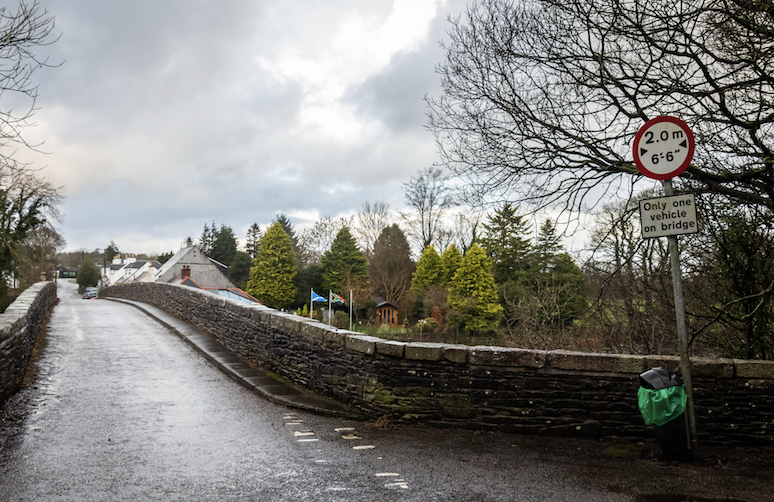
Argyll and Bute
The Scottish and UK Governments have each committed to investing up to £25 million in the Argyll and Bute Growth Deal over 10 years. This investment will drive sustainable and inclusive economic growth, benefitting individuals, businesses, and communities across the area. The proposed projects span sustainable tourism development, digital, business innovation, housing, skills, aquaculture, low carbon and regeneration.
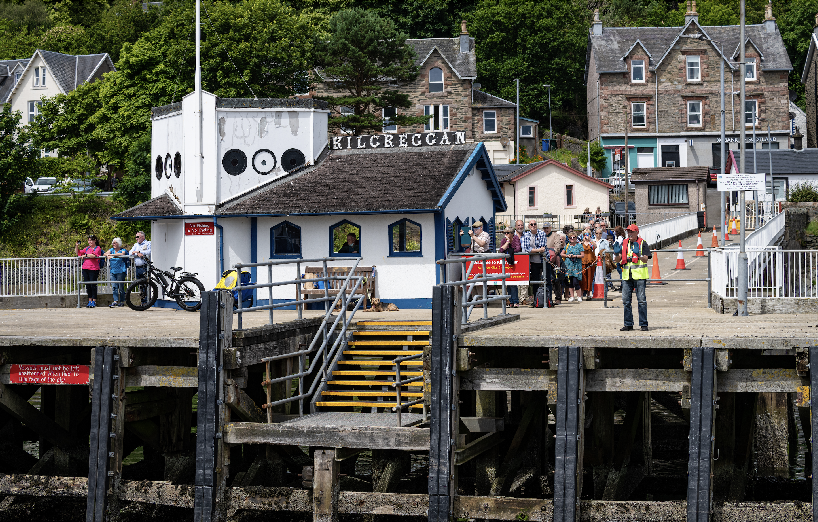
A key focus is on strengthening communities by making Argyll and Bute a more attractive place to live and work. The Scottish Government is working with UK Government and partners to agree a full deal, with good progress being made and regular contact with partners regarding progress. The Scottish Government is working closely with Argyll and Bute Council to encourage and facilitate progress and there is a shared ambition to conclude the Full Deal as soon as possible.
Inverness and Highland City Region Deal
The Full Deal agreement for the £315 million Inverness and Highland City Region Deal was formally signed on 30 January 2017. This comprises £135 million from the Scottish Government, £53.1 million committed by the UK Government and a further £127 million from The Highland Council and regional partners over the 10-year life-span of the Deal.
Projects supported will deliver affordable housing, boost innovation, Life Sciences, Tourism, and Food and Drink, foster STEMD skills in school children, and deliver transport improvements. The Deal’s 12 projects will help rebalance the population of the Highlands, aiming to attract and retain an additional 1,500 young people, and create 1,125 direct jobs and a further 2,200 in construction.
The Deal’s Affordable Housing project has the specific aim of constructing new homes to attract and retain economically active people to live and work in the Highlands. The total number of units approved to date is 526 new homes, with 284 new homes having been completed to date.
Additionally, the Deal aims to upskill the labour market and create a high wage, high skill economy; and lever in £800 million pounds of private sector investment to the region over a 20-year period.
Actions
- We will deliver Growth Deals across their agreed delivery period, and at an appropriate point evaluate the projects delivered as part of the Deal.
- We will continue working with UK Government and partners to progress to Full Growth Deal signing for Argyll and Bute.
- We will seek to open Inverness Castle to the public by Financial Year 2025/26, as part of the Inverness and Highland City Region Deal.
- We will continue to construct new homes as part of the Deal’s Affordable Housing Project, to attract and retain economically active people to live and work in the Highlands
Green Freeports
Working in partnership with the UK Government, the Scottish Government will establish two Green Freeports in Scotland. Each Green Freeport will be supported by up to £26 million in start-up funding and will benefit from tax reliefs and other incentives through a combination of devolved and reserved powers. Once operational, the Green Freeports will support businesses to create high-quality, well-paid new jobs, promote growth and regeneration, and make a significant contribution to achieving our net zero ambitions. In particular, Inverness and Cromarty Firth Green Freeport has identified the decline of local working-age population within the Highlands as a key strategic challenge. With aspirations to develop Inverness and Cromarty Firth Green Freeport into the largest European hub for the development of the offshore wind industry, the Green Freeport aspires to create 16,250 jobs across the UK (of which more than 10,000 are estimated to be created in the Highlands) and attract over £3bn in investment in green energy projects. Working closely with Highland Council and other public and private sector partners across the region, the Inverness and Cromarty Firth Green Freeport will aim to create opportunities which can support young people to stay, live and work within the Highlands.
Action
We will continue to work closely with the two selected Green Freeports in Scotland, to ensure that they deliver maximum positive impact as soon as possible.
Local enterprise
Scottish Government recognises the crucial link between local economies and population retention. Working aged population not only contribute to local spend, but ensure the sustainability of our communities through, for example, volunteering in emergency services. Research on International interventions to support population retention further demonstrates this important link between local economies and community viability.
In our rural and island communities, there is a narrow business base with just under half of employment being within four sectors; health; agriculture, forestry and fishing, retail and accommodation and food services sectors.[5] With wages being typically lower than average in these communities, they also have further to stretch with significant additional costs of living and of doing business in rural areas, particularly transport and fuel costs. Therefore, the health and performance of the local economy is of vital importance to local community sustainability.
Supporting local enterprise would help to strengthen the local economy, which could lead to greater local spend that, in turn, supports community regeneration and, potentially, population stability. Furthermore, working to support local enterprise demonstrates Scottish Government’s recognition that rural and island communities are important areas of economic potential. It is crucial, however, that economic support as a route to addressing depopulation has a strong evidence base.
Action
We will continue to explore opportunities to support local enterprise in order to strengthen the evidence base for the relationship between diverse, healthy local economies and sustainable populations.
5.5 Local delivery
Community Planning Partnerships
Maximising the impact of local decision-making structures is intrinsic to allowing communities and stakeholders to design and deliver measures which address population challenges. As part of this, access to services is an important factor when individuals consider whether to move to or remain in a community, and so community planning can be an effective tool in supporting more stable populations.
Community planning is about how public bodies work together, and with local communities, to design and deliver better services that make a real difference to people’s lives. It drives public service reform by bringing together local public services with the communities they serve, and provides a focus for partnership working that targets specific local circumstances. Partners work together to improve local services and to ensure that they meet the needs of local people, especially those who need the services most.
A Community Planning Partnership (or CPP) is the name given to all those services that come together to take part in community planning. There are 32 CPPs across Scotland, one for each council area. Each CPP focuses on where partners’ collective efforts and resources can add the most value to their local communities, with particular emphasis on reducing inequality.
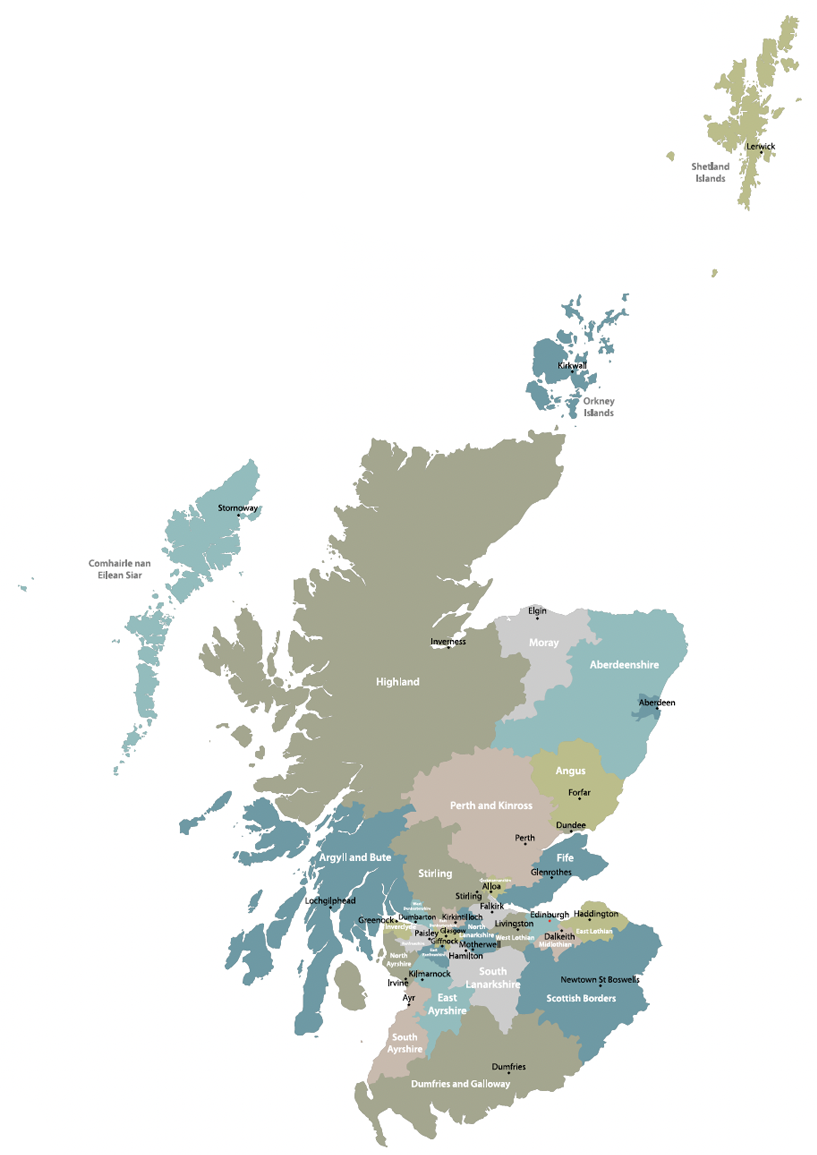
The Verity House Agreement, published in June 2023, states that CPPs will be recognised as a critical mechanism for the alignment of resource locally, focused on prevention and early intervention, and delivering shared priorities. The Verity House Agreement also highlights that Scottish Government Place Directors will continue to act as ambassadors for Local Government and CPPs across portfolios and will build a strong understanding about place-based leadership and local plans that focus on shared priorities.
The Scottish Government is committed to continued collaboration with all partners to improve community planning further and will engage further with COSLA, the CPIB, the Community Planning Network to agree collective next steps.
Actions
- We will engage further with COSLA, the CPIB, the Community Planning Network to agree collective next steps around community planning.
- We will support local government and community planning, including through Scottish Government Place Directors, aligned to the ambitions set out in the Verity House Agreement, including supporting areas which are facing issues relating to population.
Community delivery
This Action Plan is clear that community buy-in, gained through delivery which involves them from the start, is intrinsic to our collective success in addressing depopulation. A range of organisations have been consulted during the development of this Action Plan and ongoing community engagement, particularly during the design of Phase Two of this programme of work, will enable us to harness the variety of different perspectives present within affected communities. For example, Community Councils, Community Planning Partnerships, Local Action Groups, and the breadth of third sector organisations all play a crucial role in maximising the potential within areas affected by population decline.
Rural Communities are continuing the LEADER grassroots-based approach to make decisions about the local projects and priorities that support the Scottish Government’s national objectives. However, if local community structures are to thrive and grasp new economic opportunities to encourage population retention and growth, they need support as rural Scotland emerges from the challenges of rurality, exacerbated by the problems caused by Brexit, the COVID-19 pandemic, and the ongoing cost crisis.
In 2022/23 Scottish Government invested £11.6m in our rural communities to allow them to address local challenges and opportunities, through our Rural and Islands Communities Ideas into Action fund. A further initial £9.6m of funding is ringfenced for use by Local Action Groups in 2023/24.
However, for communities to capitalise on the support and resource that the Scottish Government provides requires an understanding of how local anchor organisations operate, their priorities and what is needed to genuinely empower them to deliver change. This includes how anchor organisations are resourced to deliver projects and services that sustain their communities.
Peer support, networking and expert advice are crucial in supporting capacity and capability within communities. Development Trusts Association Scotland (DTAS) is a member-led organisation that provides support to communities across Scotland to set up, develop and grow development trusts. Development Trusts can be at the centre of their community’s regeneration and/or can develop a strong community infrastructure which meets the needs of people and place.
Supporting and working with organisations such as DTAS and their membership, ensuring the knowledge of anchor organisations embedded within their communities is fully utilised, will be key in creating places that people want to live in by meeting the needs and demands of local people.
The following case studies highlight how this action, with the right support, can allow communities to shape their own futures.
Case Studies – Capacity Support
Communities have highlighted that a challenge in delivering transformational infrastructure projects is a lack of organisational capacity and/or expertise. In 2022/23, the Scottish Government supported a range of island communities through projects focusing on empowering the community to shape their own individual and collective futures. These were delivered in Rum, Tiree, and Arran.
In Rum, the Isle of Rum Community Trust (IRCT) undertook a project focused on carrying out feasibility studies for potential local development proposals, and an options appraisal in relation to potential models of ownership for Kinloch Castle, including innovative governance and leasing options.
One of the intended outcomes of the project was to demonstrate how communities can engage with their own, and the Scottish Government’s ambitions for their wellbeing and that of the environment they live in.
IRCT encountered issues in progressing the projects as originally intended, reporting difficulties including limited staffing and Board resources, as well as limited availability of contractor resources to take on the proposed work in the short delivery timescale dictated by the grant offer. These are issues often reported from those undertaking community development projects.
Whilst some aspects of the projects were able to be progressed, the issues IRCT experienced ultimately meant the projects could not be concluded within the original timescale. This further highlights an important issue for communities and grant funders alike. When empowering communities to deliver projects, it is essential that the capacity of community staff and volunteer directors are factored in.
Whilst restrictions around grant spend timescales meant IRCT were unable to complete this project, it has still been valuable in demonstrating that resource issues for communities do not always solely concern financial resource and that when considering empowering communities through increasing resources, financial project/capital funding alone is not always sufficient or the best form of support. In this instance, the community would have benefited from additional people resource.
In Tiree, small, targeted financial support was provided to the Hebridean Trust to support the redevelopment of Hynish, Tiree – a project bringing existing buildings into use for long-term housing, worker accommodation and business/enterprise space. By including flexibility in the funding to enable the delivery partner to use it to meet the proposed objectives of the project as they saw best, this allowed for a mix of specialists and experts to be brought on board to then work with the local community to take forward this project.
In Arran, support was provided to the Arran Development Trust to increase their organisational capacity for a limited period in order to allow staff to focus on progressing the final processes required to begin developing 18 new homes in Lamlash.
The Arran Development Trust had secured investment from the Scottish Government and engaged with a range of Private Financial Companies to support the development of this project. The additional funding on increasing organisational capacity, ensured they had the security and time to focus on this specific project, securing the required permissions and agreement to finally see site works begin.
Community Councils
Community councils are the most local tier of statutory representation in Scotland. They bridge the gap between local authorities and communities and help to make public bodies aware of the opinions and needs of the communities they represent.
Community councils act as a voice for their local area. However, their specific role and size (area and population) can differ. Community councils should establish and communicate the views and priorities of their community to local authorities and other public bodies. Whilst not part of local government, they can have a positive and productive role in complementing the role of the local authority, and are, therefore, a crucial vehicle for democratically-driven local delivery.
To effectively represent their community, community councils must be proactive in consulting and engaging with local residents. Increasingly, this may require a combination of in-person and digitally enabled engagement.
Actions
- We will work to increase rural youth participation in community councils, to empower young people to inform improvements to services in their area, making rural communities more attractive places to live and work.
- We will support Social Media/Content Creation Training for local community council members to encourage greater engagement and a stronger voice in improving local services. This will include the provision of 10 websites for rural- and islands-based community councils, that meet accessibility legislation and will be of particular benefit to local people who have additional needs because of disability.
- We will develop specific rural and islands website content to improve access to opportunities for education, training, or employment.
Community Hubs and Spaces
Community hubs benefit residents and visitors alike and are proven to enable community spaces to be at the forefront of rural regeneration and development. They have the potential to provide opportunities of growth and development as well as offer a safe space for those in need. Shared spaces such as centres and village halls have always and will continue to be a key aspect of any rural and island communities.
SRUC’s Rural Policy Centre has recently published a blog and a Policy Spotlight on the subject of Hubs. More resources on Rural Enterprise Hubs are available from the National Innovation Centre for Rural Enterprise website.
North Coast Connections – Wellbeing Hub
North Coast Connections provides a wellbeing hub in Tongue for the rural and scattered communities of North Sutherland. The origins of the Hub were founded in concerns about the continuation of the local day care services being delivered by The Highland Council from the Kyle Centre.
Following the transfer of ownership of the Kyle Centre from the council and the provision of a service level agreement from NHS Highland, this enabled the group to seek funding to expand and develop the Hub into a busy and vibrant community facility providing a wide range of services from a lunch club 3 days per week, meal delivery, crafting sessions, toddler groups to family days and walking groups.
The centre currently has 6 part-time employees.
In summer 2023, a learning exchange between Rural Housing Scotland and the Department of Rural and Community Development within the Irish Government highlighted the importance of rural development through the regeneration of community spaces into digital hubs. County Clare Council have enabled rural communities to flourish and repopulate through access to Broadband Connection Points in spaces that have been creatively supported. Digital connectivity is at the forefront of rural development, supporting sustainable communities, enterprise and employment as well as maximising the full potential through tourism and recreation.
The Scottish Council for Voluntary Organisations (SCVO) has been funded to: improve the provision of entry level information on compliance for running a community space (with particular focus on the unique requirements of rural and island communities); and to provide best practice in order to support people who give their time and energy to run community spaces.
Actions
- We will build on engagement with international stakeholders on remote working and hub networks, such as the Government of Ireland’s Connected Hubs Programme, to identify potential benefits of a more strategic approach to rural hub development, and consider their application in Scotland.
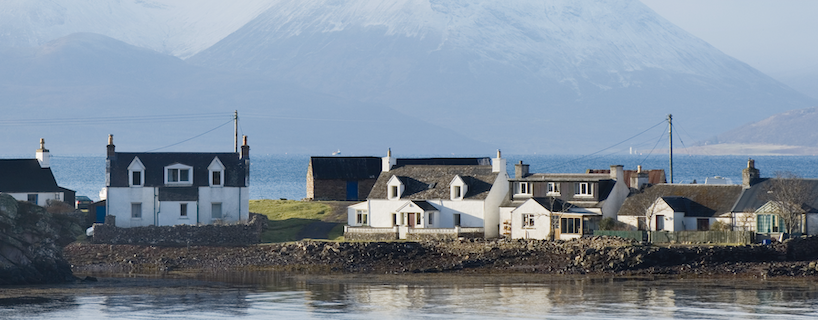
Support structures – network and resource generation for other communities
While the drivers of depopulation differ across the three communities currently housing the aforementioned Community Settlement Officers, this Action Plan sets out our understanding of the wider phenomenon occurring across many areas in Scotland. In doing so, this represents the start of targeted action being supported by the Scottish Government which will explore and start to address the phenomenon where it is occurring in other parts of the country.
To support those other areas across Scotland in developing their own locally identified actions to address their specific population challenges, we intend to bring together learning and experience to develop a “Route Map” as part of this Action Plan. This will be a resource for sharing best practice for community-driven partnership working across Scotland.
Action
We will develop a “Route Map” for sharing best practice for community-driven partnership working across Scotland.
Contact
Email: population@gov.scot
There is a problem
Thanks for your feedback